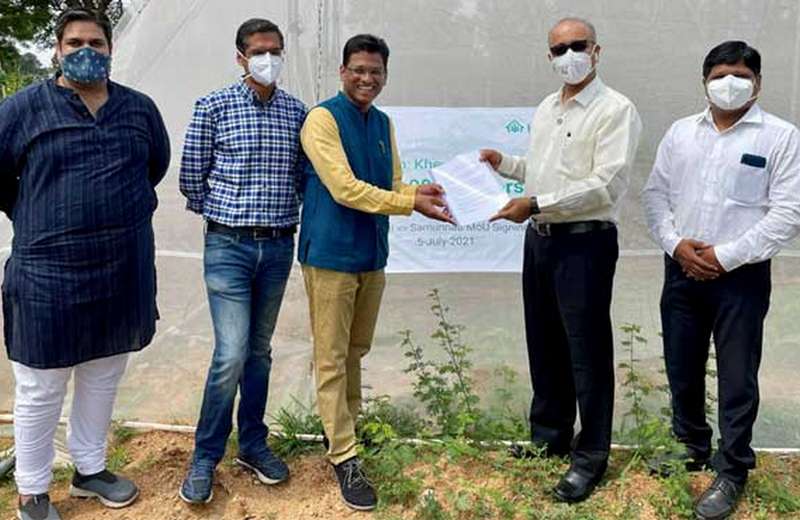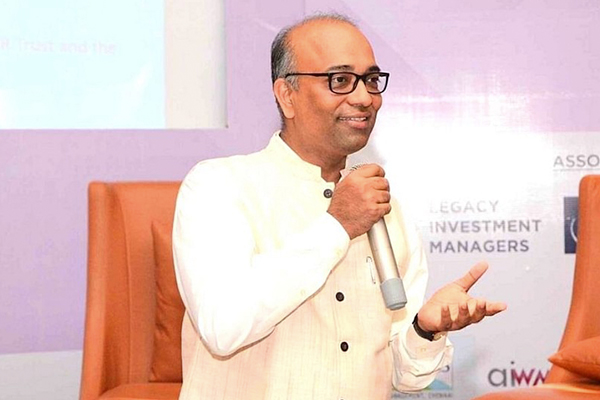
Featured in thebetterindia
Chennai-based Anilkumar SG runs Samunnati that provides financial services, the right markets and institutional building for farmer producer organisations (FPOs).
How do you go from working as an ordinary bank clerk posted in rural Andhra Pradesh to running India’s largest agritech enterprise in a span of 30 years? Anilkumar SG, the 49-year-old founder and CEO of Samunnati, has some answers. Starting out as an ordinary clerk in a rural branch of the Canara Bank back in 1991, today he is the Founder and CEO of an agritech venture that works with 1,500 farmer producer organisations (FPOs) on the supply side of the value chain. This in turn represents about 6 million smallholder farmers (as members of these FPOs), and more than 2400 private agri-enterprises either involved in food processing or organised retail chains on the demand side.
Samunnati represents aggregators on either side. Based out of Chennai, the venture defines itself as a B2B2C (Business to Business to Consumer) entity which is innovating with agricultural-finance and commerce to make the larger agricultural value chain operate at a higher equilibrium. The venture calls its approach AMLA (Aggregation, Market Linkage and Advisory Services). So far, it has presence in more than 100 agricultural value chains spread over 22 states in India and has powered over $1 billion of gross transaction value in its journey so far. By 2027, it envisions impacting 1 in every 4 farming households through its network.
Samunnati began its journey by mitigating the problem of access to capital for smallholder farmers. Their farmer-centric approach led them to realise quickly that the gaps of the Indian agricultural ecosystem lay beyond the problem of capital. As an entity, Samunnati today has three core offerings—financial services (customised working capital solutions), providing market linkages for both the FPOs and agricultural enterprises, and institutional building for FPOs.

‘My Mother, A Warrior’
Anilkumar was the youngest of four children in a humble lower middle-class family along the semi-arid Karnataka-Andhra Pradesh border. Born in Kolar, which was once famous for its gold mines, he was raised in Anantapur and Bellary until finishing school.
“My father, a bank officer, lost his job when I was 10. For the next 8 years till I got my first job, my mother took charge. We lived a very frugal existence. In fact, we didn’t even have rice to eat for two years, but the self-respect my mother had was so strong that she didn’t send us to live in any relative’s house. During the summer holidays, she would make us take exams organised by the Dakshin Bharat Hindi Prachar Sabha (an organisation looking to improve Hindi literacy among non-Hindi speakers in South India) and ensured we took advantage of all the educational possibilities before us,” recalls Anilkumar, speaking to The Better India.
After high school, he attended college in Tumkur, where he enrolled into a mechanical engineering course. He harboured dreams of joining the Indian Air Force, but out of curiosity and necessity, he took the Banking Services Recruitment Board (BSRB) Exam during his holidays after high school.
Upon clearing the BSRB exam, he got a job offer from Canara Bank, which at the time was paying him Rs 1,600 a month. This was more than the Rs 1,200 a month his entire household was earning at the time. Given his circumstances, he discontinued college within six months of joining the course and started his first job in 1991 when he was just 18.
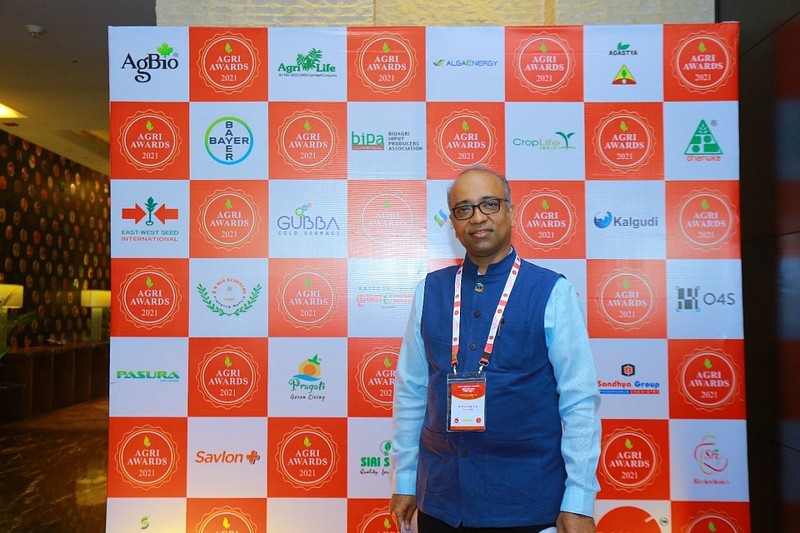
Early Lessons in Banking & Agriculture
Anilkumar credits his nearly four-year tenure as a bank clerk in Belagal village in Kurnool district—which back then had a population of barely 4,000 predominantly engaged in agriculture-related activities—for teaching him some valuable lessons in rural banking on the ground and the dynamic relationship between farmers and formal institutions of finance.
“The posting in Belagal was among the best things to have ever happened to me. Working there helped me understand what it means to engage with those whose livelihoods are dependent on agriculture. Most products and services we offered as a bank were beautifully designed, but came up short against challenges unique to agriculture in terms of execution,” recalls Anilkumar.
Most small-holding farmers he was working with were those who owned and worked on the land. The entire product (loan) design offered by the bank at the time would often fail on execution. Whether the farmer grew paddy, sunflower, sugarcane or cotton, all of them were given what he calls ‘bullet-disbursement loans’. Remember, those were the days when most farmers didn’t have bank accounts and rural India saw low proliferation of banking infrastructure.
So, they would withdraw the entire loan amount and go home.
“When the household has so many demands on their meagre resources, they will dip into the loan amount. The farmer is then left with limited resources to invest in various steps of cultivation. So, they end up borrowing more from informal sources to keep up with the investment required on the land or end up compromising on a couple of steps in cultivation, which either way will have an impact on the revenue or output. As a banker, I’m at risk, whenever there is a negative impact on the output,” he says.
But even this payment to the banker is based on the assumption that cultivation and harvest has happened. It’s also not unusual for the crop to fail in between cultivation or harvest. Although the crop has failed, the banker has already disbursed the entire loan amount thinking that the crop will go through its conventional cycle and there will be a harvest. Meanwhile, the farmer has already used the money for other things, but he is indebted to a larger extent than before while activity for which the loan was taken hasn’t fructified.
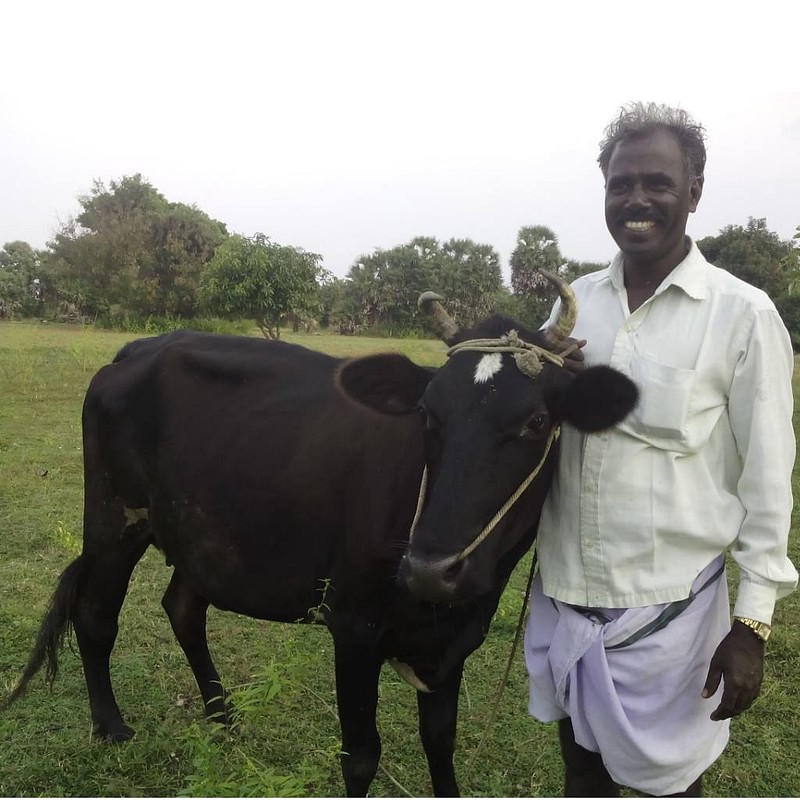
“This is where the on-ground understanding of the challenges smallholder farmers undergo is missing in our traditional banking system. That’s why you have tranche disbursement or stage-wise disbursement of house loans, where money is released based on the stage of construction. We don’t engage in bullet disbursement of housing loans, but we would do it for agricultural loans because the operational expenditure of disbursing smaller amounts of money is high, notwithstanding the fact that bankers are outsourcing their risk to another constituent who is more vulnerable and has no choice but to take that loan,” he adds.
Although he was barely 19 at the time, Anilkumar realised the importance of product design to mitigate the risks associated with the borrowers. Bankers take collateral to protect themselves from borrowers. The bullet disbursement of loans that bankers engage in the farming sector is to protect them from the operational expenditure of disbursing smaller loan amounts. But unless the constituent (borrower) is protected, how is the banker protected?
Another major lesson he learnt through his time in Belagal is understanding who is a wilful defaulter and who isn’t. However, there are those who default because of circumstances like a family member falling seriously ill or a situation in a village on which they have no control over. While nothing can be done with wilful defaulters, Anilkumar realised that the approach to defaulters on account of circumstances and situations beyond their control should be to sit across the table, take upon their problem as your own (banker) and find ways to solve it.
“As a banker, I know that the said person has the intention and capability of honouring their debts. It’s a matter of self-respect for them,” he observes.
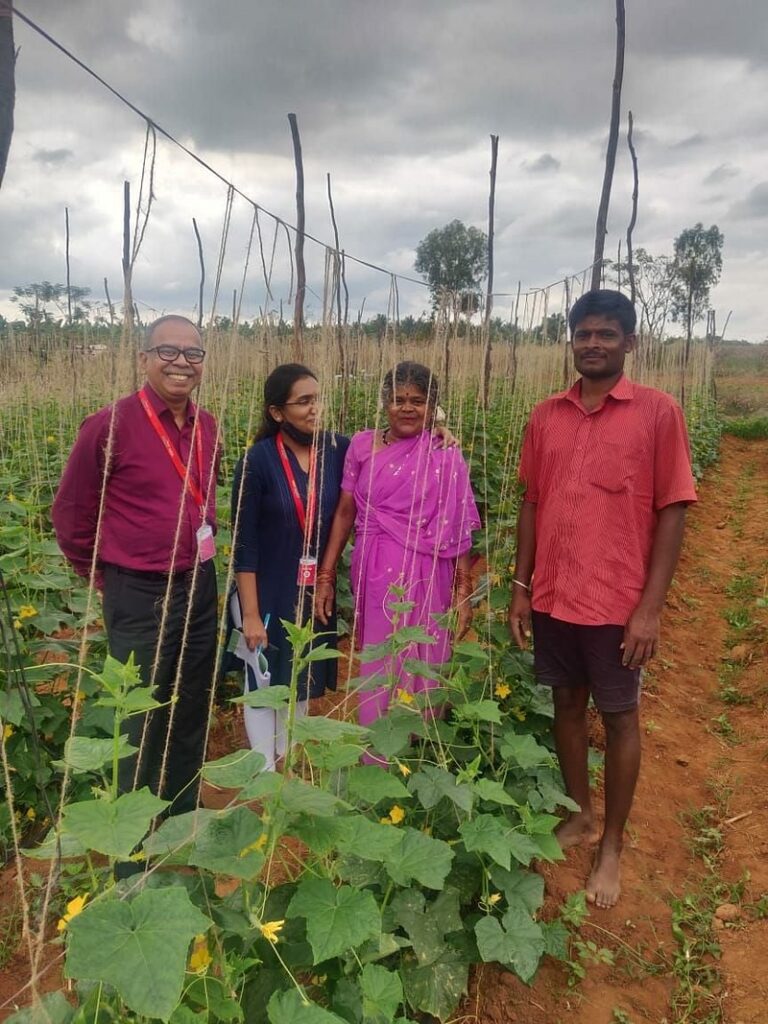
Farmers – The Focal Point
After his tenure at Canara Bank, he joined ICICI Bank in Hyderabad in 1996. Following multiple roles there, he went to Manila, Philippines, in 2004 on a short study break to earn his Master’s degree from the Asian Institute of Management. Upon coming back to India, he joined the rural micro-banking and agri-business group at ICICI Bank.
After working in the head office for two years there, ICICI sent him on deputation to set up IFMR Trust, which works in the area of financial inclusion, as a founding trustee in Chennai. He would end up working as the Group CEO at IFMR Rural Channels till 2014.
His stint at IFMR Trust was extremely helpful in understanding how a household in remote/rural areas dependent on agriculture operates. For seven and half years there, he was Group CEO.
While an in-depth understanding of a rural farming household is an important dimension, it doesn’t operate in a vacuum. The household operates in an ecosystem and is usually dependent on one or two major value chains whether they’re engaged in it or not. That’s where the seeds of Samunnati looking at a value chain proposition germinated.
“If we want to impact a given rural farming household, we have to go two or three levels above it because it operates in that ecosystem. Mitigating the shocks of that ecosystem is what allows the household to protect itself in the long term. Our realisation is also that farming is a household enterprise which has its own hierarchy of needs,” explains Anilkumar.
The first order of need is access to finance.
Once a farmer has reasonable access to finance they seek customised working capital solutions like crop loans. For an interim period, the household doesn’t have liquidity. So, formal financial institutions structure a product (loan) where a farmer has access to a certain limit, and following harvest they make a bullet repayment.
To increase the throughput (or turnover) in the value chain for agri-enterprises, customised working capital solutions are required because the seller (farmer) wants the money immediately, while the buyer (agri-enterprises) more often than not wants to pay later.
“All of our products are completely customised to take care of the cash flow associated with both value chains. Our loans range from one day to five years, and quantum ranges from Rs 5,000 to an individual farmer to Rs 20 crores to an agri enterprise. This is where we bring in customised products and solutions for our partners,” informs Anilkumar.
When buying and selling happen without any constraints in working capital, the volume of trade increases. And when this happens, the agri-enterprises look at newer supply lines. That is when Samunnati proposes to bring the FPOs they work with on the supply side and establish market linkages with the buyer, which is what their AMLA approach is all about.
On most occasions, farmers end up losing money on account of not accessing the right markets at the right time. Once a household has access to market linkages, the next need that requires fulfilling is whether it can access advisory services.
Samunnati offers advisory services to FPOs as a risk mitigation and growth strategy. A lender is as strong as their borrowers.
“If the borrower is strong and they can use the money for the purpose they had borrowed it for, then they would be able to earn the delta in terms of their margins and pay it back to us. Our institutional building is more integral to our risk mitigation rather than a CSR activity, and we have teams dedicated for this service,” explains Anilkumar.
The last requirement is that should any of these above steps fail, is there a safety net so that the fall is not debilitating because farming households are very vulnerable. In October, Samunnati launched an insurance initiative Annadata Suraksha Abhiyaan (ASA) to cover over 50,000 smallholder farmers who are part of its FPOnEXT programme, an exclusive network working with farmers producers organisation, from everyday farming risks.
These include accidental deaths, permanent or partial disablement, accident and hospitalisation, fractures, burns, vector borne diseases, emergency ambulance charges, child education and marriage expenses, as per their press release.
The insurance benefits will initially provide coverage up to Rs50,000 to each farmer free of cost via FPOnEXT platform.
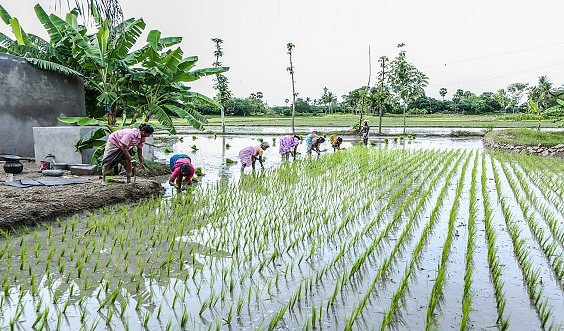
Samunnati has come this far because it took a market-led approach from the top. This means, a large agri-enterprise like ITC, for example, that wants a certain quality, grade and quantity for their wheat, will first map the areas where this particular wheat is grown in the best quality and engage with the farming community pushing for best practices to grow what they need. Once farmers grow this wheat, ITC will buy it from the farm gate (market linkages).
There is an economic interest associated with this activity because it’s market-led. The safety net is built-in because the ability to procure this specific quality and quantity of wheat is where ITC waits.
The incentives of both farmers and agri-enterprise are aligned.
“As a venture, we started with finance, but soon realised that market linkages, capacity building, and guarantees are important as well. We are now looking to approach farmers from the top with all this together. If you want to truly impact the life of a small-holding farmer, you need to be an ecosystem player and build an open agricultural network with farmers at the centre. In agriculture, you cannot be a silo player. To truly impact a farmer’s life positively, you need to take a market-led approach, and keep them at the centre,” he says.

